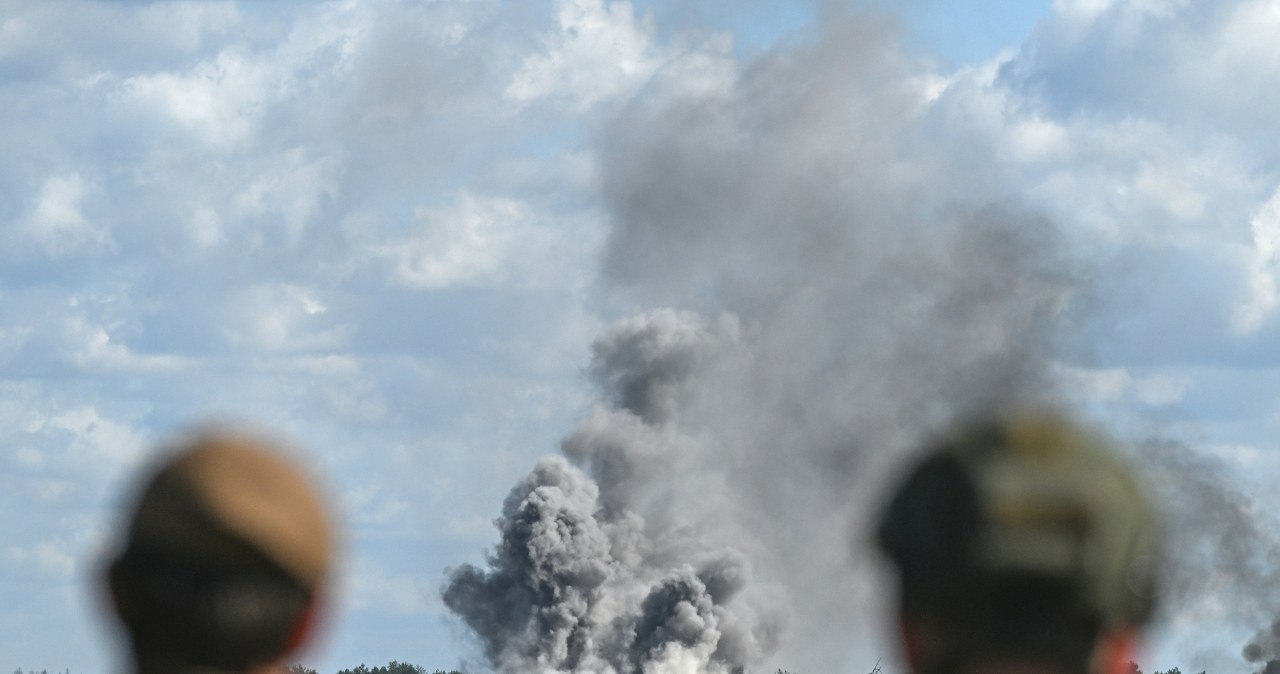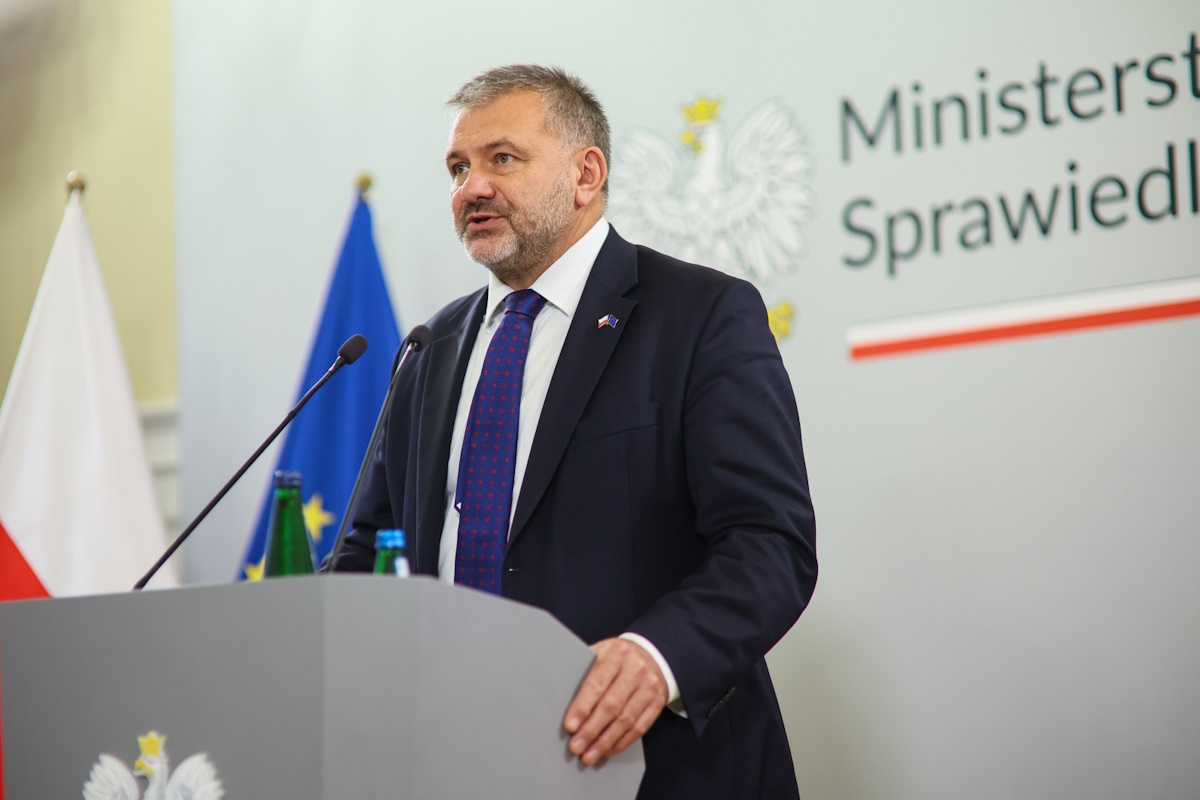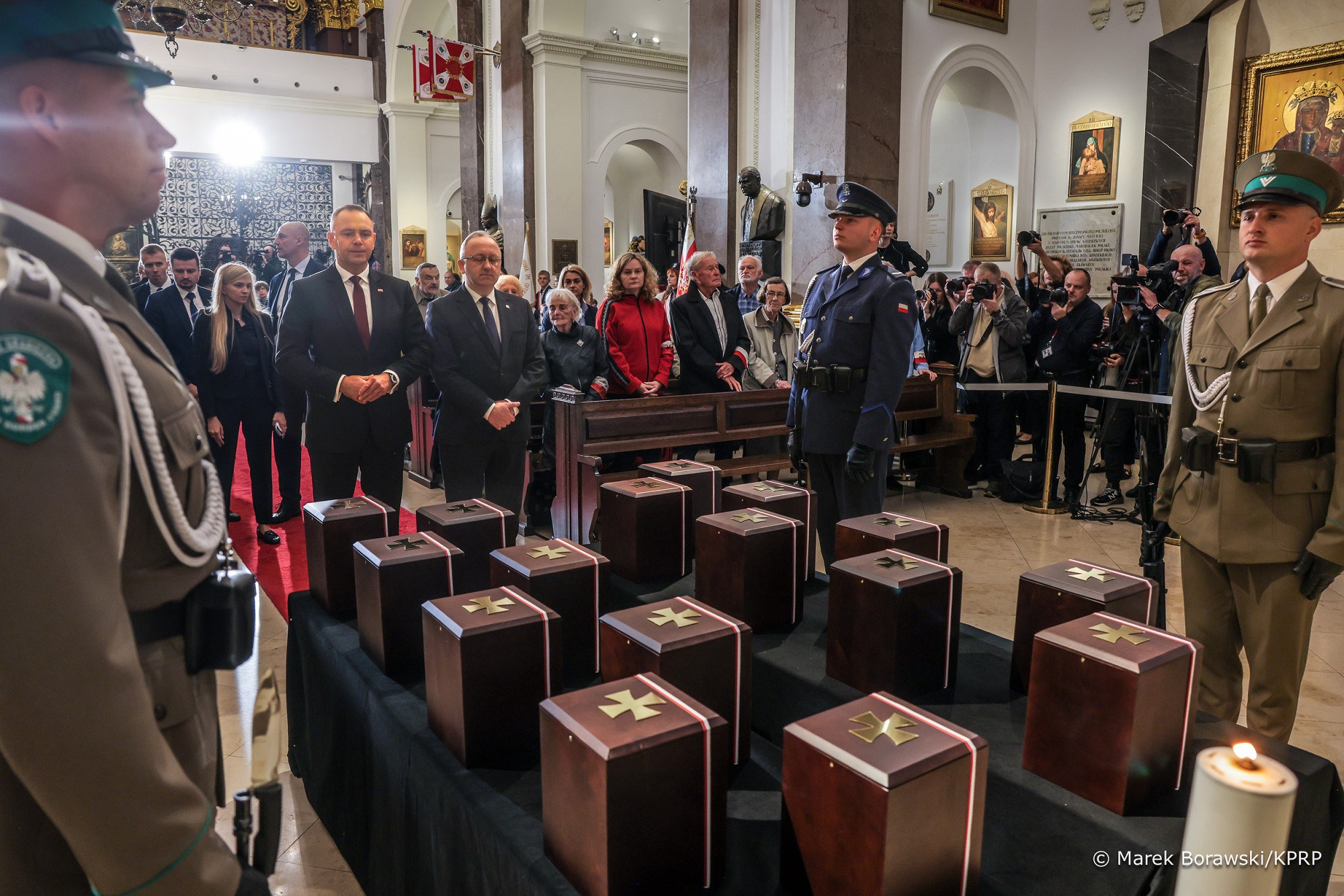Functional uniforms in effective camouflage, new bulletproof vests and composite helmets are not only about the comfort, but also about the safety of soldiers.
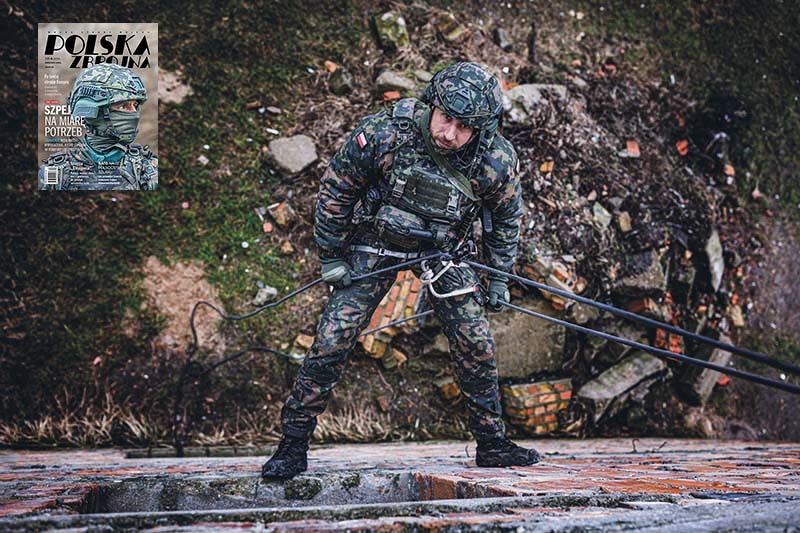
Polish army for several years has been enhancing its equipment with armament systems for better mobility, fire power and air defense. Poland has been procuring new MBTs, self-propelled howitzers, missile artillery launchers, aircraft, helicopters, air defense systems, etc. Now, the time has come for a soldier’s personal equipment. “Experience gained in Ukraine clearly indicates that prolonging activities there affect changes in the operational art and tactics on both sides. The initially assumed by Russia ‘shock and awe’ attack, including attacks from many directions with the use of its full kinetic energy capability, broke down in the face of determination and resistance of the Ukrainian Armed Forces. As initial plans failed, Russia introduced activities known in WWI and defined as methodical battles. The doctrine assumed a compromise between fire power, mainly artillery fire, and offensive capability against not well trained reservists, available at the end of the war. The adoption of this doctrine was related to increased personnel losses, which was acceptable by contemporary strategists. Present experience reveals that Russia, having much greater mobilization capability than Ukraine, applies similar doctrinal assumptions and does not care about own losses. The conclusions from this current war for the Polish Armed Forces clearly show that the losses in personnel must be minimized at all costs. For that reason, General Chief of the Polish Armed Forces, General Wiesław Kukuła, set forth a specific task – military personnel must be in the center of our modernization plans,” emphasizes Colonel Janusz Misiak, Deputy Chief of the Armed Forces Operational Planning and Training Directorate (J3/J7).
The management of the Ministry of National Defense decided to assign additional financial resources to new personal equipment of soldiers, which made it possible to precisely plan the purchase of its modules. As a result of the decision of the chief of the PAF General Staff, the ‘Szpej’ planning and implementation project was launched (Polish word ‘Szpej’ defines all equipment essential for professional and competitive activities, such as alpinism or cave exploration, but also for military activities). The goal of the project is to increase the survivability of soldiers on battlefield and their resistance to adverse weather conditions, to improve power and precision of fire at longer distances from personal weapon, but also capability for effective fight at night and in urbanized area. One of key factors is also keeping high morale of active soldiers and reserve soldier called up for training.
The implementation of the project requires cooperation and a significant engagement from the Armament Agency, PAF General Staff, Armed Forces General Command, Territorial Defense Forces Command, Armed Forces Support Inspectorate and Polish defense industry. The first stage of the project is planned to end by December 2024.
Advantages of the Titan Program
Launching “Szpej” does not mean the end of the Titan program, which started years ago to develop modern equipment for our soldiers. “The Titan program covers several dozen projects in various areas, such as uniforms, protectors, communication, optoelectronics, or armament systems. As an operational program, it enables simultaneous implementation of multiple cooperating projects within the research and development work. Unfortunately, not all of them are implemented according to proper technical specifications or as planned. There are delays due to the lack of technological availability or extensive cost of a given prototype. Some projects, which have been completed and verified, are now waiting for completion of other projects as they are mutually dependent, e.g. in order to design a bullet-proof vest, we had to know a design of a uniform to apply the same sort of camouflage,” explains Colonel Janusz Misiak. Some of the Titan projects have been completed. Many projects are now in the advanced or last phase of work.
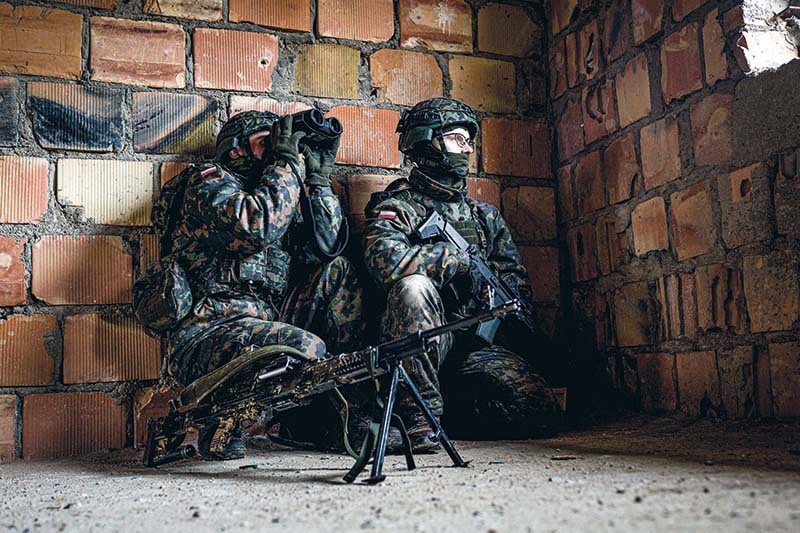
There are however projects, which have been successfully implemented for service. The effects of the Titan program is best seen in the field of new armament systems. The army received the Grot carbines and Vis 100 handguns. Another products within the Titan project, as long as they meet the requirements, will be included in the Szpej project. If, in order to finish a given project, e.g. bullet-proof vests, the only thing that is needed is a proper camouflage fabric, it is the Szpej project that makes it possible to take a proper decision about the implementation of the vest with other project, already ongoing in the Polish Armed Forces.
The Titan will probably remain a renewable program, as technological progress in various areas, such as optoelectronic, will make the products out of date quite soon. For that reason, the elements of soldier equipment will be monitored on a regular basis.
A current political and military situation has sped up the run of the projects for the armed forces. The army wants to get a series of next products and carry out tests in the units as soon as possible. Only then large orders will be filed. “The elements of personal soldier equipment can wear out fast, so we need them in large quantities. Target quantities were defined earlier. We knew how many uniforms, bullet-proof vests, composite helmets or weapons we wanted. It had been planned before the production machine of the Polish industry accelerated, we needed some time, as Polish plants were not tuned to the war production, in large quantities and at required speed,” explains Col Misiak.
New Uniform
In the first stage of Szpej (in 2024) the priority is to deliver uniforms and equipment, because there are new military units, and personnel of the existing ones is increasing. Also, uniforms and equipment wear out faster due to the engagement of soldiers in the support of the Border Guards in the eastern regions of our country. On top of that, they also are intensively used during trainings.
Equally important are changes in the regulations on uniforms and equipment for reserve soldiers. Currently, reserve soldiers get, for practical and economic reasons, older type of uniforms and equipment, such as helmets or bullet-proof vests. By decision of the chief of the General Staff of the Polish Armed Forces, the aim is that a reservist gets everything new. Also, new legal solutions are being worked on, which make it possible for them to take their uniform clothing and their gear home.
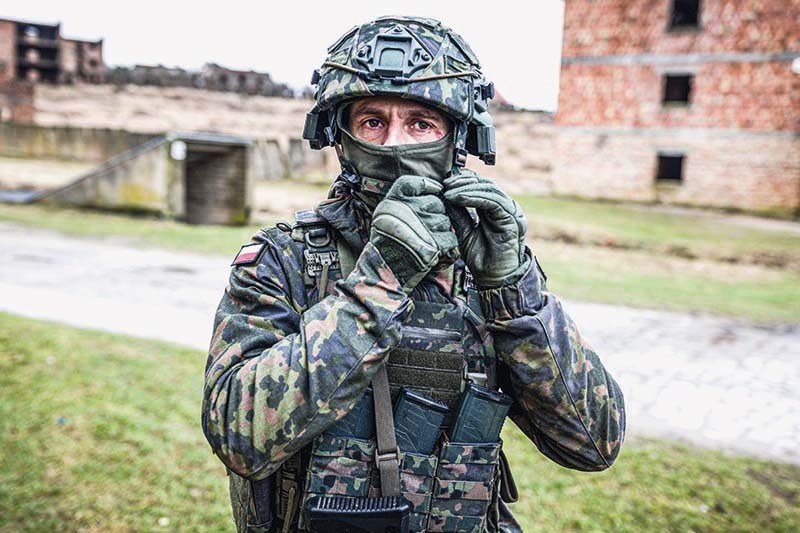
In the nearest future, the army will get a new supply of uniforms. They are now being tested in various units, such as 18th Mechanized Division is testing uniforms from the Titan program, and the Podlasie Military Task Group – a warm military jacket designed, based on the suggestions of soldiers, by the specialists in the Military Research and Development of Uniformed Service (WOBWSM) in Łódź. The WOBWSM also modernized all-season and summer uniforms with the use of improved textile of various surface mass and weave. “We have changed the panther print, and significantly decreased the recurrence of spot pattern, and as a result, there’s no pattern recurrence on the surface of 0.914 m long and 1.6 m wide. This should increase the safety of soldiers,” says the WOBWSM commander, Col Wojciech Szymczak. Next to modified Panther M, a new camouflage developed within the Titan program is tested.
The WOBWSM specialists, according to the users’ suggestions, introduced changes in the cut of field uniform, e.g. pockets (access to pockets and regulation of their depth) and the trousers with the Velcro tape trimming instead of elastic band. The trousers now have an added belt, the longer back part of the uniform blouse was changed, and the uniform cuff is now regulated with an inside tape. “A visible change is a smaller military rank badge fastened with velcro,” says Col Wojciech Szymczak.
In case of research on field uniforms, it is all about the improvement of a user’s comfort, but as LtCol Marek Trzonek, Deputy Commandant of WOBWSM, says, one of the reasons was to lower the labor-consumption, which directly translates into higher number of manufactured products. This aspect results in satisfying the needs of a growing number of Polish army soldiers. After changes, about 2,000 more uniforms can be produced per every 100,000.
WOBWSM also designed new elements of the uniform, such as winter jacket and winter jacket liner made of polyamide textile, for the use in low temperatures and bad weather conditions separately or together. Jacket has also been additionally reinforced for protection against holes made by backpack or other equipment. The new rainproof outfit – jacket and trousers – has been made of light masking fabric, and has zipped pockets and core vents for improved ventilation and better comfort. The clothing is rainproof and windproof.
Protection and Fire Power
Soldiers will also receive new splinter- and bullet-proof vests. The assumption is that all soldiers in active and reserve service will get them. The army will get several different models, other for mechanized and motorized infantry, and other for light formations. A novelty will be specialist vests, including those for the crews of armored vehicles. The Polish Air Force and Navy will get different solutions.
The army wants to introduce the bullet-proof vest designed within the Titan program as soon as possible. It is actually two vests within one, light and heavy, which can be separated. The vest combines ballistic protection with a new carrying system. The WOBWSM also developed an alternative solution: a new model of stripes for carrying gear, which includes hip belt, breast panel, a set of nine pockets of different purposes and a fastener for attaching other equipment, e.g. a vest. The carrying sets are tested in the units and modified accordingly to user opinions. The new solution will replace the stripes for equipment carrying – 988/MON model.
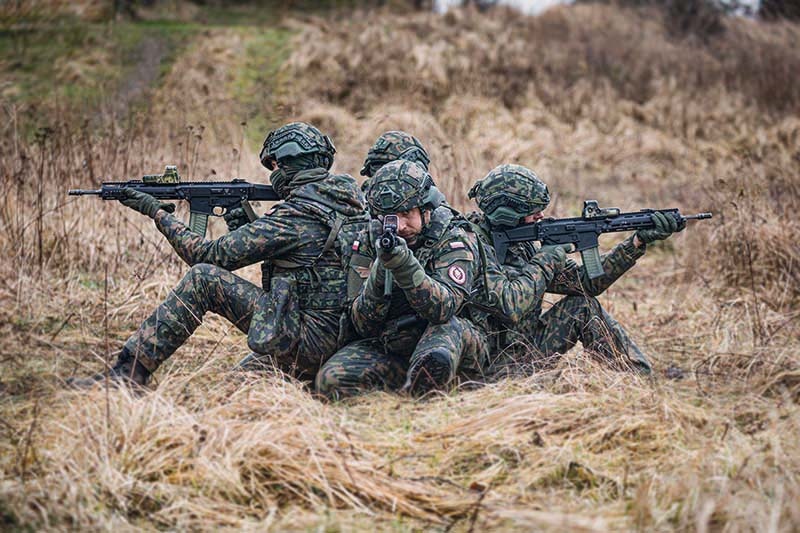
At the same time, several types of helmets will be introduced. They are made of composites with ballistic protection duration of about 10 years. All helmets which end their service life are now undergoing verification tests, and, depending on the result, their service life can be prolonged for several more years. However, considering the plans of the Polish Armed Forces in terms of army size and mobilization, a regular purchase of several dozen thousands new helmets a year will be necessary. “By introducing new solutions, we provide soldiers with the possibility of completing their own uniform, personal equipment and ballistic protection for specific tasks,” says Col Janusz Misiak.
What is important, soldiers will wear their vests at all times – during tactical training, at the shooting range, and other garrison events. The goal is that they get used to constant wearing the vests. The emphasis on ballistic protection is non-accidental. The experience gained in the war in Ukraine indicates that bullet- and splinter-proof vests could reduce human losses even by 80%.
Handguns At Gunpoint
There are changes in equipping soldiers with shooting weapon. The number of handguns will be increased, and about 40-50% of soldiers will get them. “At the same time, we’re planning to provide long weapon to all soldiers, also officers at the highest command levels. Obviously, in proper configuration,” says Col Janusz Misiak. There will also be an exchange of weapons of vehicle crews. Machine guns will be substituted subcarbines of 5.56-mm caliber from the modular firearm system (MSBS). Polish army will also get automatic bull-pup weapon. Apart from a reflexing sight, most carbines will additionally be fitted with a magnifying telescope. Large deliveries of new products will allow in upcoming years for ultimate withdrawal from the army the weapons of AK-7 family (starting in 2025). Soldiers will get a higher number of new optoelectronic devices.
The Szpej program does not exclusively implement Titan solutions. It is open for the products of Polish companies, which are not part of the project. The priority remains the purchase of equipment elements on the Polish market, but if there is no certain product available in domestic defense industry, there is a possibility to buy them abroad – equipment or technologies enabling the launch of production in Poland. Szpej is an elastic and open project, as there are constantly appearing new ideas and solutions, which the army is interested in. At the same time, a constant technological progress requires regular replacement of the equipment.

